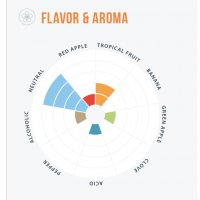Actually, kveik ales were traditionally meant to be drunk at their greenest. There was no aging or lagering in Nordic brewing tradition. Kveik ales were most often brewed right before the events to be drunk at: take the Gravøl (grave ale), which was brewed upon notification of a person's death and should be ready for the funeral feast.
After consistently getting not-so-exciting results with fresh Voss ales, I tried the long way: I kept the beer in primary vessel for a month and then bottle-aged it for a year (a 8%ABV traditional Norwegian recipe from the L. Garshol's book). After a year, malt, hop and alcohol flavours mellowed nicely, but the yeast twang I disliked in my green Vosses didn't change much and was still there.
My conclusion is there's something in the yeast flavour that I just don't like, whether green or aged. And the often cited "orange" is a very approximate term to describe the twang. The Voss "orange" definitely cannot substitute the actual orange peel for brewing Wits.
I also noticed my Voss kveik ales were more palatable when I used a heavy juniper infusion for my brewing water, as per traditional Nordic recipes.
























![Craft A Brew - Safale BE-256 Yeast - Fermentis - Belgian Ale Dry Yeast - For Belgian & Strong Ales - Ingredients for Home Brewing - Beer Making Supplies - [3 Pack]](https://m.media-amazon.com/images/I/51bcKEwQmWL._SL500_.jpg)

































